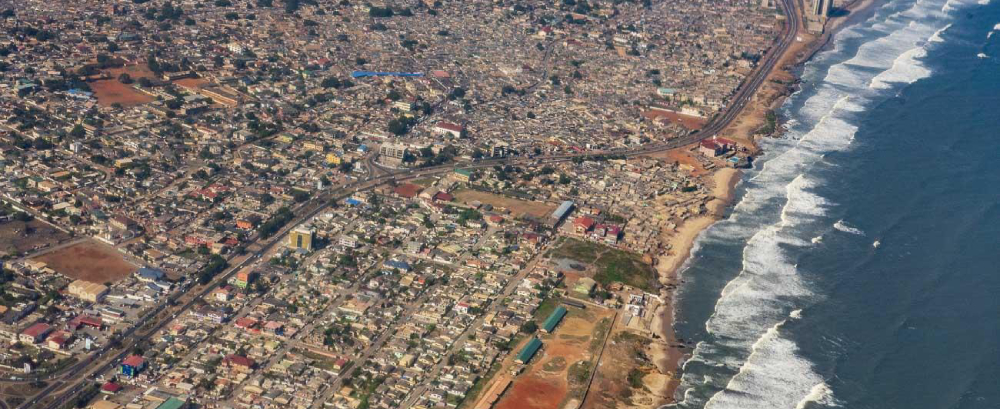
Senegal
April 12, 2025
Sierra Leone
April 12, 2025Ghana, located in West Africa, is one of the continent’s leading producers of minerals, particularly gold. The country has a rich history of mining and is known for its extensive mineral resources, which play a crucial role in its economy. Here’s an overview of the key mineral resources in Ghana:
Key Mineral Resources
Gold:
Overview: Gold is the most important mineral resource in Ghana, and the country is one of the largest gold producers in Africa and the world. The gold mining industry is a major contributor to the country’s economy, providing significant export revenues and employment.
Major Gold Mines: Some of the key gold mines in Ghana include the Tarkwa mine, Obuasi mine, Ahafo mine, and the Akyem mine. These mines are operated by major global mining companies such as AngloGold Ashanti, Newmont, and Gold Fields.
Reserves: Ghana has substantial gold reserves, with ongoing exploration activities suggesting the potential for further discoveries and continued production.
Bauxite:
Overview: Ghana has significant bauxite deposits, particularly in the Atewa, Nyinahin, and Kibi regions. Bauxite is the primary ore for aluminum, making it an important resource for the global aluminum industry.
Reserves: The bauxite reserves in Ghana are substantial, and there are plans to develop the bauxite industry further, including the potential for establishing an integrated aluminum industry.
Manganese:
Overview: Ghana is one of the world’s top producers of manganese, a critical industrial metal used in steel production. The primary manganese deposits are located in the Nsuta region in the Western Region of Ghana.
Reserves: The manganese reserves in Ghana are considerable, with the country being a significant exporter of manganese ore.
Diamonds:
Overview: Ghana has alluvial diamond deposits, particularly in the Eastern Region, including the Birim River Basin. While diamond production has decreased over the years, it remains an important mineral resource for the country.
Reserves: The diamond reserves in Ghana are modest, but the country continues to produce diamonds, mostly through artisanal and small-scale mining.
Bauxite:
Overview: Ghana is home to large deposits of bauxite, particularly in the Awaso area. Bauxite is the primary ore used in aluminum production, and Ghana’s bauxite industry is a key part of its economy.
Reserves: The bauxite reserves in Ghana are significant, and there are ongoing efforts to develop an integrated aluminum industry in the country.
Iron Ore:
Overview: Iron ore deposits are found in several regions of Ghana, including the Shieni area in the Northern Region. While iron ore mining is not yet fully developed, the potential for future exploration and development exists.
Reserves: The iron ore reserves in Ghana are promising, with ongoing exploration activities to assess their viability.
Limestone:
Overview: Limestone is abundant in Ghana and is primarily used in the construction industry and for cement production. The major limestone deposits are found in the Buipe and Nauli areas.
Reserves: The limestone reserves in Ghana are extensive, supporting a thriving cement industry that supplies both domestic and regional markets.
Oil and Natural Gas:
Overview: In addition to its mineral wealth, Ghana has significant offshore oil and natural gas reserves. The discovery of the Jubilee oil field in 2007 marked a major turning point for the country’s energy sector.
Reserves: The oil and natural gas reserves are considerable, with ongoing exploration and development activities aimed at increasing production.
Clay:
Overview: Clay deposits are found throughout Ghana and are an important resource for the local ceramics industry. Clay is used to produce bricks, tiles, and pottery.
Reserves: The clay reserves in Ghana are adequate to meet local demand, particularly in the construction sector.
Investment and Extraction Situation
Gold Mining Dominance: Gold mining is the backbone of Ghana’s mineral sector. The country has attracted substantial foreign investment in this area, leading to the development of several large-scale gold mining operations. The government continues to promote gold exploration to attract more investment and maintain Ghana’s position as a leading gold producer.
Emerging Sectors: While gold dominates the mining landscape, other minerals such as bauxite, manganese, and iron ore are gaining attention. The government is encouraging investment in these sectors to diversify the mining industry.
Artisanal and Small-Scale Mining (ASM): ASM is prevalent in Ghana, particularly in gold and diamond mining. While ASM is crucial for local economies, it faces challenges such as lack of formalization, environmental degradation, and safety concerns. The government is working to regulate and formalize these activities to improve sustainability and productivity.
Environmental and Social Impact: Mining activities in Ghana must balance economic benefits with environmental and social impacts. Concerns about land degradation, water pollution, and community displacement have led to calls for more sustainable mining practices and stronger community engagement.
Infrastructure Development: Infrastructure, such as transportation and energy supply, is crucial for the efficient extraction and export of mineral resources. The government is focused on improving infrastructure to support the growth of the mining sector.


